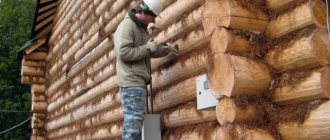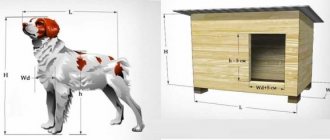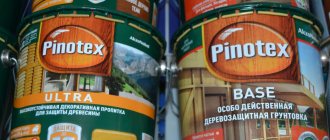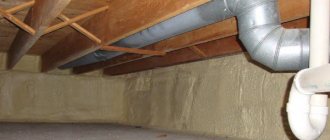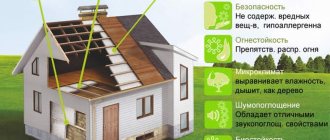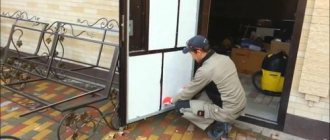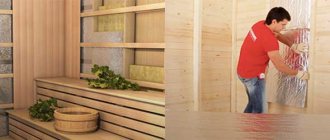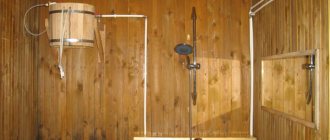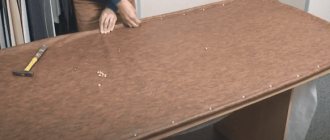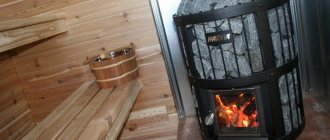The need to insulate the booth
In regions with a cold climate, the dog house must be insulated.
Conditions depend on the climate and the breed of the pet. Different types of dogs react differently to cold:
- Animals with short hair, long fur and thick undercoat tolerate frosts down to -40°C without pain. For example, the Moscow Watchdog, Husky, and Bernese Mountain Dog sleep in the snow and remain in the yard when it gets cold.
- Dogs that do not have a thick undercoat require soft conditions so that they do not get sick.
The ability to withstand frost also depends on previous living conditions. Pets previously kept indoors are more difficult to tolerate cold. In warm weather, shedding is more intense, and the undercoat thins out.
Insulation rules
The animal's house is not placed directly on the ground, because the bottom is cooled by the frosty soil. For this purpose, wooden blocks or ceramic bricks are provided. The air layer will retain internal energy. The booth is assembled from wood, since the material does not conduct heat well.
Basic rules of insulation:
- the manhole is located on the leeward side to reduce drafts;
- the entrance hole is covered with a canopy made of dense material;
- waterproof the roof to prevent leaks; there must be dry bedding inside;
- insulate all enclosing surfaces (walls, ceiling, floor).
The vestibule retains heat well and prevents wind from blowing. A warm kennel with an extension will protect the dog from precipitation; it will not freeze while eating, since the drinking bowl and bowl are placed in the area of the additional wing. Provide one of the acceptable options for heating the kennel.
Temperature, insulation thickness
The pet heats the unheated room using the heat of its body. A normal temperature in dogs is considered to be in the range of 38.5 – 39°. There should be approximately the same level inside, which is provided by insulation.
The thickness of the insulating layer depends on the type of material. All types have different thermal conductivity and different degrees of moisture saturation. The insulation gets wet from the direct action of precipitation or soil moisture, and absorbs drops of condensation from the difference in internal and external temperatures. A damp insulator no longer protects against the cold.
Insulated and heated dog house
Friends, today we have an unexpected, but very interesting topic related to our smaller brothers. At first glance, film electric heaters and the type of activity of our company, which deals with heating systems, have no direct relation to dogs. But this is not the case, as you can see by reading this article, prepared based on questions from our visitors. For example, is it possible to put film in a doghouse to keep it warm? Of course yes! And today we’ll talk about how to do this correctly and effectively.
Questions about how to insulate a dog house are quite natural and logical. Our specialists are asked these questions almost every day. However, before heating the dog house, you should take care of its insulation. Therefore, we share with you the real experience of our employee. Meet this cute dog named Pepsi !
In the summer of 2014, she nailed herself to a garage that temporarily replaced an outbuilding on a summer cottage. There were no more buildings in the field then.
The dog was very thin and whined constantly. We adopted her and gave her the nickname Pepsi. The dog was young, only 7-8 months old, and recovered very quickly, finding its home, becoming very lively and cheerful.
She spent the summer hiding under the garage from the intense heat, and felt quite comfortable. And by autumn we put together a booth for our pet. It looks like the most ordinary one, but well insulated from the inside.
For insulation, 50 mm thick penoplex . It not only has minimal thermal conductivity, but is also not afraid of dampness and water getting on the surface.
We insulated the walls and ceiling all around from the inside, and the floor from the outside. At the entrance, they attached an ordinary rug, which protected Pepsi from direct drafts (an ordinary tarpaulin can also be used for this purpose). All the cracks of the insulated dog house were filled with polyurethane foam from the inside and outside, so it turned out to be very warm. We visited Pepsi every day and she felt absolutely comfortable even in the harsh Ural winter. Pepsi warmed herself ! Her own heat was enough to create an optimal temperature inside the booth (by the way, normal body temperature in dogs is 38.5-39°C).
We did not measure the actual air temperature that was in the booth. But when it was -30 Celsius outside, you could warm your hands inside! This effect was achieved thanks to excellent thermal insulation using 50 mm thick penoplex. At the same time, the insulated dog house stood in an open place in the middle of a field - there were no fences or other shelters from the wind, only a garage 2 meters away.
It was here, in her warm, comfortable booth, that Pepsi gave birth for the first time, bringing with her three large “chipmunks.”
And for two winter months with severe frosts, they practically did not leave the booth, which is quite understandable - it was dry and very warm there. After the puppies grew up, we gave them into good hands, and to this day they delight their owners.
By the way, we want to take this opportunity to thank all the people who did not remain indifferent to the fate of Pepsi and the puppies. Every day someone fed them, as a result the puppies grew up healthy and cheerful. Thank you all so much !
Pros and cons of an insulated dog house
But let’s return to our topic and see what happened to our booth during the winter season, let’s look at all its pros and cons . The first thing we noticed was that it turned out to be a good “thermos”, the heat losses of which turned out to be minimal. And these minor losses were perfectly compensated by the dog with the warmth of its body (well, the puppies also helped a little).
Back then, no one thought about installing heating in a doghouse. Moreover, they did it in the fall in relative haste, so they didn’t even line the foam interior with anything. For this, you could use anything: plywood, boards, osb or mdf boards, and other materials. And this is what happened as a result.
We see that the insulation in places of intense contact and constant friction of animals has crumbled. And the puppies also contributed when they bit off or scratched out pieces during their games. Therefore, to ensure durability, it is advisable to hide even such dense insulation as penoplex from dog claws and teeth. And in those places where contact between dogs and the material was absent or minimal (for example, on the ceiling), penoplex looks like new.
But in the summer we learned that our wonderful booth had a significant drawback. Pepsi gave birth again this summer. And in this litter there were already six beautiful puppies.
The sultry heat turned the warm booth into a real sauna. After all, in addition to the entrance, it turned out to be absolutely sealed and did not even have any cracks for the flow of fresh air. The situation was saved by the fact that the design of the booth included a roof that could be raised. This allowed for a slight draft, but it was still quite hot throughout the summer.
The conclusion suggests itself is that when designing an all-season booth, it is imperative to provide removable insulation. The same penoplex can be removed from the walls, and the roof can be raised for ventilation. As an option, you can make a booth for your pets in an enclosure or a booth with an open, uninsulated veranda and an opening roof (as in the picture below).
Such a booth will provide excellent protection from the sun and provide a draft.
In our case, too, everything ended well. The puppies, like Pepsi, escaped the heat in the coolness under the garage, almost without going into the kennel. They have grown up well and today all six are in the good hands of their new owners.
How to make an insulated dog house with your own hands
We once again focus your attention on the fact that for a healthy dog in winter it is enough to just insulate the booth well and foam all the cracks and joints. This will reduce heat loss so much that the dog will have enough heat from its own body to warm itself, that is, it will warm itself. In most cases, additional heating of the dog house For those who consider this insufficient, who want to protect their pets 200% from extreme frosts, there is an excellent solution. These are film electric heaters.
For a doghouse, you can use two types of materials, the quality of which we have verified. In addition to reliability and other advantages, they have suitable standard sizes. This is a heating film TM (has a cutting pitch of 0.25 m) and ZEBRA EVO-300 (cutting pitch of 0.6 m). Since the operating principle of the heaters is the same, the choice of a specific material must be made, focusing, first of all, on the parameters of your booth. It is necessary to place the film on the ceiling, covering 70-90% of the ceiling with the material if possible.
Please note once again that the installation of film electric heaters will be justified only if the booth is properly insulated all around . For this, the same 50 mm penoplex that we used is suitable, plus at the entrance you need to secure a curtain from a direct draft (it can be a piece of tarpaulin, a floor mat, etc.).
As an example, let's consider a heated dog house measuring 0.6 meters wide, 0.9 meters long and 0.7 meters high. To install heating we will need:
- Heating film TM dimensions 0.5 x 0.75 m – 1 pc.
- Thermostat RTC 70.26 – 1 pc.
- Differential circuit breaker 2P, 10 A, 30 mA – 1 pc.
- Wire VVGng 2 x 1.5 sq. mm of the required length.
- OV-2 connectors – 2 pcs.
- A piece of cable duct 25 x 25 mm, 0.55 m long.
- Modular box for installing equipment – 1 pc.
- Finishing decor to cover the film on the ceiling (plasterboard, osb board, board, any other decor no more than 12 mm thick). It should be closed at a distance of 2.5 to 5 cm from the film heater.
Materials for insulating a dog kennel
The insulation is laid as the booth is being built
. All materials must be covered with plywood, boards, OSB boards, chipboards and other rigid panels. The materials of a warm dog house must meet the following requirements:
- Ecological cleanliness. This is especially true for the inner layers, the secretions of which the dog will breathe.
- Minimum degree of saturation and water retention. For example, mineral wool is protected from condensation by waterproofing, while creating a ventilated gap for drying.
- Strength. This also applies to the canopy, which the dog regularly moves with its body when exiting and entering.
Different materials are used for the inner and outer layers.
Insulating the booth for the winter from the inside
Insulators made of natural material are installed inside. There is an effective insulation consisting of flax and additives (85 and 15%, respectively). The material is flammable, but special components in the composition reduce the dangerous quality.
Other types of internal insulation:
- Felt. Refers to breathable pads, affordable and safe appearance. They are nailed to surfaces with nails with wide heads. There is no need to additionally trim with plywood.
- Soft fiberboard. The environmentally friendly type is made from small sawdust and wood fibers. It has low heat conductivity and allows steam to pass through well. Due to the latter property, the slabs regulate the humidity in the booth.
Rolled insulation materials are also used, for example, polyethylene foam, foil types of penofol, polyurethane foam. They are placed with the shiny side inside the kennel.
Insulating a dog's house from the outside
Insulating the walls of the booth with mineral wool from the outside.
Moisture-resistant types and insulation materials that can absorb water are used. They are protected with film and additional lathing is installed. Outside, such a “pie” will be appropriate, but inside it will take up a lot of space.
Other types are used:
- Styrofoam;
- expanded polystyrene.
The joints of the insulation are sealed with polyurethane foam for outdoor use. There is an option to foam the entire outer surface of the walls.
Materials
Let's consider options for insulating a dog kennel:
- Insulation of the booth with mineral wool. Mineral wool is an excellent insulation material, however, due to the small size of the kennel, the process will be labor-intensive. The mineral wool layer will need to be waterproofed. It is not recommended to use glass wool for insulation.
- Thermal insulation of a dog kennel with polystyrene foam. An excellent insulation material would be polystyrene foam with a thickness of 0.5 cm. Unlike mineral wool, it is not susceptible to external influences, so waterproofing is not required, but protection from dog claws will be needed.
- Insulation of the booth with heat insulators. Rolled thermal insulation materials such as polyethylene and penofol have excellent thermal insulation properties. They are very easy to attach and also require additional sheathing.
- Thermal insulation of the booth with felt. In addition to the fact that felt is a natural material, it is absolutely safe and inexpensive. The inside of the booth will always be dry, as it is vapor-proof. In addition, this is the only material that does not require sheathing; ordinary nails with large heads are suitable for fastening.
- Heaters will help. If electricity is supplied to the kennel, or it is possible to supply it, then a panel heater will perfectly warm the dog. Its infrared panels must be secured inside the booth or mounted under the casing. Film heaters are also perfect for booths. Thermal film also needs to be installed under the inner lining.
Ways to insulate a doghouse for the winter
They use fabric mattresses or make warm bedding. A cover is put on the pillow or mat, which is regularly removed and washed. Such bedding, in addition to washing, requires drying in the open air and treatment against fleas with non-toxic products for animals.
You can lay a layer of well-dried hay on the floor of the booth.
There are many options for insulation, the choice is up to the dog owner.
- Straw or well-dried hay is placed at the bottom of the kennel. For the winter period, you need to prepare a certain volume, because the material will have to be changed every week or shaken out. Straw cakes and becomes damp over time. Owners speak negatively about the use of this method, because ticks are parasitic in the litter. It is better to take thyme, sage, wormwood.
- Polystyrene foam does not absorb moisture, so it is ideal for insulating a kennel, but only from the outside. There is conflicting information about the health hazards of the material, so it is better to place it outside to ensure that your pet does not inhale harmful components. The material is glued to the surface; on top it requires lining with a finishing layer of plywood and boards. The seams are foamed to get rid of drafts.
- Mineral wool is represented by stone wool, glass wool and slag wool. All varieties are suitable for external insulation of walls from frost. A vapor barrier is placed under the material, then a slatted frame is made onto which the material is nailed. Another layer of additional sheathing will be required to create a ventilation gap for drying drops of condensation and the wool itself.
- Felt is placed on the walls, floor, and roof inside the booth, since the non-toxic material will not harm the pet. It is made using a non-woven method, the raw material is goat and rabbit wool, which is dumped during the production process. The material has a uniquely low thermal conductivity. A type of felt is felt, which is thinner, but retains all the characteristics of the base material.
Penoplex is used to insulate the booth inside and outside. It is produced on the basis of inorganic and organic polymers and is produced by extrusion under pressure. It has a small thickness, is nailed with hardware, a stapler, and placed with glue.
Curtain installation
After the booth is completely insulated, you need to equip it with a curtain that will maintain the optimal temperature inside. Suitable fabrics for making curtains:
- Tarpaulin. This material is highly durable. During production, its base is treated with a special compound that prevents fire. A distinctive feature of this fabric is its elasticity, so the curtain can be easily adjusted according to the size of the entrance itself.
- Felt fabric. It is made on an artificial basis, so it perfectly retains heat inside the kennel. Felt can be easily cut into the required pieces, and there is no fear that the edges of the material will begin to crumble or tear.
When making a fabric door, it is worth considering that it should completely block the entrance, but not disturb the pet. It is advisable to first mark out the required dimensions and only then cut the fabric. It is best to make small allowances of 5 cm on the side and 10 cm at the bottom. It is best to fasten the fabric using a wooden plank and self-tapping screws, then the dog will not be able to accidentally tear it off.
Electrical insulation
Heating the booth with electricity
The method requires connecting wires to the booth or using battery-powered equipment. The booth can be insulated with heated bedding; the temperature can be set in the range of 35 – 70°C. The covering is made of polyethylene or moisture-resistant fabric.
Installation takes little time; the mat is simply placed on the floor. The disadvantages are that the dimensions of the panel do not always match the square of the bottom of the kennel. When attaching, it is difficult to correctly determine the location of the heating parts inside the mat.
Heating options:
- Panel method. The heater is silent in operation, the thickness of 2 cm will not take up space in the booth. The temperature rises to a maximum of +50°C and does not dry out the air. The heating surface does not need to be covered with hard materials; the heater has a high degree of protection from fires and moisture.
- Cable heated floor. The system is installed in the floor, between two plywood slabs; a temperature regulator should be placed in the frame. All soldered areas and gaps are treated with silicone. Turn on the heating in late autumn, lay a pet rug on the floor.
Film thermal insulation in the form of an infrared membrane saves energy, distributes heat evenly in space, and does not dry out the air. Laminated film on both sides prevents damage. Before installation, place foil on the surface to reduce heat loss. Requires insulation with rigid panels, heats up to a maximum of +60°C.
Step-by-step instruction
The kennel has a removable roof so that it can be cleaned, changed bedding without problems, and the inside treated for fleas. Attention is paid to the insulation of the seats of the opening structure, since they are bridges for the passage of cold air.
Wall insulation
Upholstering a frame booth with stone wool slabs
The process of installing the insulator depends on the type of material used for this.
General procedure:
- the walls are cleared of debris, treated with antiseptics, and non-toxic preparations are used;
- fill the waterproofing membrane if required by the insulator used;
- the insulating layer is glued to special compounds or nailed with hardware or a stapler;
- an additional vapor barrier film is installed on top;
- The walls are finished using the chosen method, for example, with boards or fiberboard panels.
When installing films and insulating material, do not allow ventilated cracks or gaps, since drafts are more dangerous for an animal than cold. Do not use varnish or paint for internal surfaces; it is better to leave the surface in its natural state.
Insulating the floor from the cold
Cheap penofol material in several layers is suitable for the floor.
Sometimes owners use only the bedding at the bottom of the booth. This option is acceptable in warm climates where there are no severe frosts. Outside, under the bottom of the kennel, a layer of roofing material is nailed to protect the surface from soil moisture. To do this, the booth is turned over to conveniently nail down the material, and the boards are impregnated with an antiseptic.
Inside, the floor is lined with glassine, it is laid on the walls (10 cm), the joints are overlapped. You can use 2 layers of roofing felt, roofing felt, thick polyethylene. The insulation is secured with a stapler or small self-tapping screws; it can be glued to bitumen mastic.
Thermal insulation material is laid, it is nailed down with slats, on which a vapor barrier layer is laid. Finished floor boards or chipboard or OSB panels are nailed on top.
Under a warm dog house, dig a shallow pit (25 cm) to install a cushion of sand and crushed stone (10 and 15 cm, respectively). Roofing felt is laid over the bedding.
Protective curtain for entrance manhole
For winter, a protective curtain is needed.
The bulk of the heat flows through the hole. For curtains, thick fabrics are used, for example, tarpaulin, drape, wool, a flannelette blanket, you can put rubber, felt. Silicone curtains work effectively because they bend and do not deteriorate from frost, water and wind.
Sequence of work:
- Two rectangles are cut out of the material, their length and width are 5 cm larger than the hole, taking into account an overlap of 4 cm;
- the material is attached to the top of the hole, pressed with a wooden strip, the strips are placed overlapping one another so that there is no gap in the middle;
- On the sides, the curtain is also fixed with wooden slats all the way to the bottom, or elements are placed only on the upper half.
The bottom of the fabric is made heavier by sewing additional strips of material, metal plates, and rods. This is necessary so that the curtain halves do not develop from strong winds.
How to make a dog house for the winter
Construction begins with calculations. The size of the winter kennel should be optimal: the dog will be cold in a spacious mansion.
The dimensions of the booth are calculated depending on the size of the dog.
AlabaevForumHouse Member
The dog will warm itself with its own breath. Space is not needed here.
DIY insulated dog house.
When building a warm booth, use this table as a guide (dimensions are for an adult dog):
Warm booth dimensions
| Height of the manhole (entrance) to the booth | The height of the dog at the withers is 5 cm. |
| Manhole width | The width of the dog's chest is +5 or +8 mi. |
| Booth width | The length of the dog from nose to tail. |
| Booth height | Dog height |
| Booth depth | Height of the dog. |
The resulting dimensions of the winter booth can be slightly increased, but cannot be reduced.
You can calculate a winter kennel for a dog, taking into account which group it belongs to in terms of its dimensions (small, medium, large):
Internal dimensions for building a warm dog house with your own hands
| Small breeds (dachshund, shiu tzu, etc.) | 700x550 millimeters, height h=600 mm. |
| Medium-sized breeds (Rottweiler, Shar Pei, etc.) | 1200x750, height h=800 mm. |
| Large dogs | 1400x1000, h=950 |
